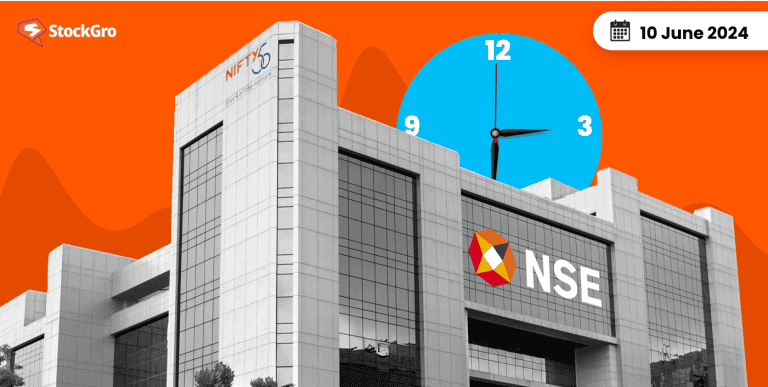
Investing in mutual funds is a popular strategy for building wealth and achieving financial independence. But with so many options available, understanding and comparing their performance can be daunting.
In this blog, we’ll break down essential metrics that can help you make informed decisions about your mutual fund investments. We’ll also touch on the importance of large– and mid-cap funds and offer tips for evaluating mutual funds beyond just their performance.
Understanding mutual fund performance
Mutual funds have become a go-to investment vehicle for many, but evaluating their returns requires more than just looking at past performance.
In May, equity mutual funds experienced an unprecedented surge in inflows, reaching a record high of ₹34,697 crore, as per data from the Association of Mutual Funds of India (AMFI).
Investment through systematic investment plans (SIPs) also surged to ₹20,904 crore in May, marking a notable increase from ₹20,371 crore in April. The milestone of crossing the ₹20,000-crore mark was achieved for the first time in April 2024. In May 2024, a significant influx of 49,74,400 new SIP registrations was recorded.
As the mutual fund industry continues to grow, understanding mutual fund performance becomes crucial for making informed investment decisions. Let’s dive into the five key metrics that can help you assess mutual fund returns effectively.
1. Point-to-Point returns (Absolute returns)
Point-to-Point Returns measure the percentage change in an investment’s value from the beginning to the end of a specific period. For example, if your investment grows from ₹20,000 to ₹30,000 over four years, the point-to-point return is 50%. This metric is straightforward but doesn’t account for the time value of money or interim fluctuations.
You may also like: Mutual funds or stocks: Which is a better investment?
2. Compound Annual Growth Rate (CAGR)
CAGR is the mean annual growth rate of an investment over a specified period longer than one year. is the mean annual growth rate of an investment over a specified period longer than one year. It smooths out the returns, providing a clearer picture of an investment’s performance over time. For instance, if an investment grows from ₹25,000 to ₹40,000 over five years, the CAGR would be approximately 9.79%, highlighting the annual growth rate if the investment had grown at a steady rate.
3. Extended internal rate of return (XIRR)
XIRR takes into account the timing and amount of each cash flow, making it ideal for investments with irregular cash flows, such as systematic investment plans (SIPs). This metric provides a more accurate picture of an investment’s return by considering the exact dates of cash inflows and outflows.
4. Rolling returns
Rolling Returns measure the average annual returns over various periods, offering insights into the consistency of a fund’s performance. By analysing rolling returns, investors can evaluate how a mutual fund performs across different market cycles, removing recency biases and providing a more comprehensive view of historical performance.
5. Risk-adjusted returns
Risk-adjusted returns consider both the returns generated and the risk taken to achieve those returns. The Sharpe ratio is a common measure calculated by subtracting the risk-free rate of return from the fund’s return and dividing it by the fund’s volatility. Sharpe ratio means how much return is generated for each unit of risk taken.
A higher Sharpe ratio indicates better risk-adjusted performance, making it a crucial metric for comparing funds.
Also read: Mutual Fund investments surge: Record inflows in January 2024
Beyond performance: Evaluating mutual funds
Performance is essential, but it shouldn’t be the only factor in your decision-making process. Here are additional considerations:
Expense ratio
The expense ratio is the annual fee charged by a mutual fund for managing your portfolio. Lower expense ratios are generally preferable as they allow a higher portion of returns to be passed on to investors. Actively managed funds usually have higher expense ratios compared to passive index funds, but they may also offer higher returns.
Alpha
Alpha measures a fund’s performance relative to its benchmark. A positive alpha indicates outperformance, while a negative alpha signals underperformance. This metric is particularly important for actively managed funds, as it reflects the value added by the fund manager.
Consistency in performance
Look for funds with a consistent track record of performance over longer periods. A fund that has delivered steady returns over five or ten years is generally more reliable than one with a few exceptional years.
Portfolio composition
Review the fund’s holdings to ensure they align with your investment goals and risk tolerance. Diversification across different sectors and asset classes can reduce risk and improve overall performance.
Role of financial advisors
Working with a SEBI-registered financial advisor can be invaluable. They can provide personalised advice, recommend funds that suit your goals, and help navigate market volatility.
Also read: SIPs: The game changer for mutual fund investors in 2023 with a 22% spike
Conclusion
Evaluating mutual fund performance involves understanding a range of metrics and considering additional factors like expense ratios, alpha, and consistency.
By focusing on key metrics like Point-to-Point Returns, CAGR, XIRR, Rolling Returns, and Risk-Adjusted Returns, you can make more informed investment decisions.
Remember, diversifying your portfolio and consulting with a financial advisor can further enhance your investment strategy, helping you achieve your financial goals with confidence.

